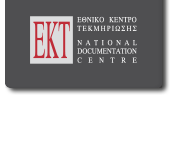Για να παραπέμψετε στο παρόν τεκμήριο παρακαλούμε χρησιμοποιήστε τα παρακάτω αναγνωριστικά:
http://hdl.handle.net/20.500.12038/269| Επίπεδο εγγραφής: | Έργο ολοκληρωμένο |
| Χρονολογία: | 2022 |
| Θέμα: | Forest fires Δασικές πυρκαγιές |
| Δημιουργός: | Ascoli, D. Oggioni, S. Barbati, A. Tomao, A. Colonico, M. Corona, P. Giannino, F. Moreno, M. Xanthopoulos, Gavriil Kaoukis, Konstantinos Athanasiou, Miltiadis Colaço, C. Rego, F. Sequeira, A. Acácio, V. Serra, M. Plana, E. Ξανθόπουλος, Γαβριήλ Καούκης, Κωνσταντίνος Αθανασίου, Μιλτιάδης |
| Τίτλος: | Towards rural development and bioeconomy integration into wildfire risk reduction and civil protection strategies |
| Γλώσσα: | Αγγλικά |
| Λέξεις-Κλειδιά: | Wildfire risk prevention; fire resistant and resilient landscapes; EU Green Deal; fire smart; fuel management |
| Περίληψη: | Pyrosilviculture and understory fuel management to reduce forest stand and landscape flammability represent loss-making interventions from an economic point of view. Consequently, prevention is carried out above all on public property and with public funds (e.g. Rural Development Programs), while the interest of the private individual for prevention interventions on aggregated areas is limited. These shortcomings do not allow to reach the distribution and the quantity of treated surface necessary to modify the fire regime and its impacts. To solve this problem, we need initiatives that catalyse the interests of multiple stakeholders (economic actors, bodies responsible for territorial management and research, fire-fighter agencies) towards common goals. Moreover, we need to improve the cost-efficiency ratio of prevention through value-chains of products and services generated by preventive measures (e.g. payments for positive externalities and ecosystem services). Within the European project PREVAIL (PREVention Action Increases Large fire response preparedness) we analysed collaborative processes in the Mediterranean Basin between private and public actors that developed "smart solutions". Different sources of funding, including non-specific funds for prevention, offer additional economic resources to support preventive value-chains (e.g. RDP funds for agro-pastoral and forestry development, LIFE funds for habitat conservation, private investments, PES mechanisms). This paper analyses the key elements that characterise smart solutions for wildfire risk prevention in Southern EU: sustainability, cost-benefit ratio, synergies between sources of financing, inter-sectoral cooperation and integration between strategic prevention planning and multiple land governance objectives, innovation and knowledge transfer, and adaptive approach. A selection of solutions documented by the PREVAIL project and replicable in other contests will be presented and discussed. |
| Εξειδίκευση τύπου : | Άρθρο |
| Τίτλος περιέχουσας πηγής: | Advances in Forest Fire Research 2022 - D. X. Viegas & L.M. Ribeiro (Ed.) Chapter 3 – Risk Adaptation |
| Άδεια χρήσης: | Αναφορά Παρόμοια Διανομή  |
| Διάθεση ψηφιακού τεκμηρίου: | Πλήρης |
| Σελίδες περιέχουσας πηγής: | pp. 929-932 |
| Εμφανίζεται στις Ομάδες Τεκμηρίων: | 5.1.1. Δασικές Πυρκαγιές |
Ψηφιακά Αρχεία
| Αρχείο | Μέγεθος | Μορφότυπος | |
|---|---|---|---|
| Ascoli Xanthopoulos et al. Towards rural development and bioeconomy integration into wildfire risk reduction AFFR 2022.pdf | 998.16 kB | Adobe PDF | Δείτε/Ανοίξτε |

